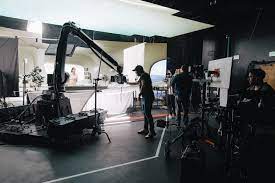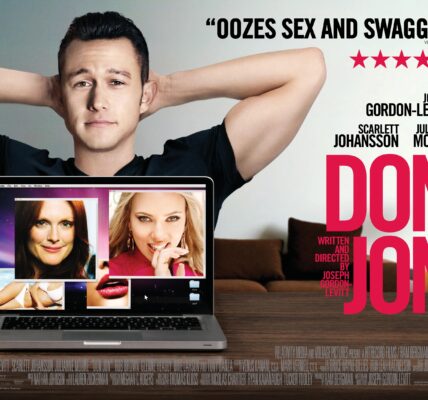In 1999, a no-budget horror film took the box office by storm, to the tune of almost $250m worldwide. Though its quality may seem lacking in retrospect, at the time The Blair Witch Project seemed groundbreaking. Starring three no-name actors (who also shot the film), the story followed a ‘documentary crew’ investigating strange happenings in the woods as they try to separate fact from folklore. It inspired a reinvigoration of the horror genre, as well as countless spoofs.
But now, 13 years later, Blair Witch’s repercussions are still being felt at the box office. And its effect on the industry can be described in two simple words: found footage. These are films that are presented as discovered footage shot by a documentarian or character in the movie from their point of view, often on a shaky hand-held video camera that you can get at your local electronics store. Though Blair Witch remains the most popular entrant in the genre, there has been a massive wave of found-footage films in the past five years alone, thanks to the success of 2007’s Paranormal Activity. Shot by Oren Peli for $15,000, it grossed a little under $200m dollars and spawned two successful sequels. Peli even brought found footage-style filmmaking to network television with The River.
This year has been especially eye-opening for the possibilities that found-footage movies can have for screenwriters. In the first few months alone, two successful horror films have been released. Despite being universally panned, The Devil Inside has grossed over $50m having been made for only $1m. The Elizabeth Olsen starring Sundance entrant Silent House has made far less, but was made for far less as well. Both films are seen as successes, no matter how you slice it.
So what does this actually mean for screenwriters? Quite a bit actually. Producers are looking for quality stories that they can make for as little money as possible, so if you have a well-written story that fits the mould, you are increasing your chances of getting your film made. On the surface, found-footage films can seem limiting to a writer, but I feel the opposite. If you’re a writer who loves to write horror films or even thrillers, this is simply another rich tool at your disposal. Because of the way they are shot, it creates far better opportunities for scares—even cheap ones. There’s also something very primordial about seeing a scary movie shot in that style. It makes what you’re seeing on screen more visceral, more real. To not take advantage of that as a writer would be a huge missed opportunity.
If you’re a screenwriter who prefers to not ply their trade in the horror or thriller genre, rest easy; found-footage films have extended their reach thanks to two that hit theatres this year. The Hangover and Old School co-writer/director Todd Phillips threw his hat into the ring as a producer on the comedy Project X. The conceit is the exact same as the films above: footage is found… but this time, it’s of a high-school house party gone awry.
Budget numbers haven’t yet been released, but the cast features no one of any name recognition and just one location—see a pattern here? The film has grossed over $50m, turning a huge profit for everyone involved. Studio comedies are getting more expensive to make each year, thanks to the ballooning costs of big-time actors like Ben Stiller or Seth Rogen. Here’s a comedy released to a wide audience that cost nothing and therefore doesn’t need to make as much to be deemed a success. If Vince Vaughn’s next studio comedy grossed $50m, it would be seen as a colossal disappointment. Project X, on the other hand, is a runaway victory.
Even more impressive is the phenomenal film Chronicle. Written by Max Landis (son of An American Werewolf in London director John) and directed by Josh Trank, this film more than any other throws a wrench into the found-footage genre and could conceivably have a Blair Witch type impact on the possibilities for this form of filmmaking. Chronicle is, boiled down to its core, a superhero story. More specifically, it’s the only original superhero story to hit screens this year, so Landis and Trank’s feat is even more impressive.
The film follows three buddies as they explore a mysterious object that grants the high schoolers telekinetic abilities: they can move objects with their minds and even eventually learn how to fly. It’s not long, however, before one of the boys, Andrew, begins to use his power in dangerous ways. There’s no denying Chronicle’s great conceit, but screenwriters should take note of the execution of the story. It’s very emotional, thanks to a subplot involving Andrew’s parents. His father is an abusive alcoholic and his mother is dying of cancer. In fact, Andrew’s bad behaviour stems directly from events involving his parents.
By tying emotional trauma to Andrew’s superpowers, the filmmakers force the audience to invest in this character who, by the end of the film, is doing harm to innocent people. To be candid, the found-footage conceit is stretched a bit thin at times and perhaps the best part of Chronicle’s story is that it could have worked as a standard narrative film. But the style brings a sense of intimacy to a story that is almost otherworldly. Would this style of filmmaking work for a Spider-Man film? Certainly not. But for a movie about three kids who the audience does not know, the found footage allows us to view their lives on a personal level and invest in their outcome.
The thing about Hollywood is that fads come and go. Found footage could be obsolete by the time you read this. But rather than look at it as such, you as a screenwriter should be viewing it as something far more valuable: an opportunity. I would never suggest you turn any story you think of into a found-footage film—the story always needs to come first. But studying these movies could open your eyes to new storytelling possibilities and, in a world where it’s near impossible to get a movie made, that is something to be excited about. •













